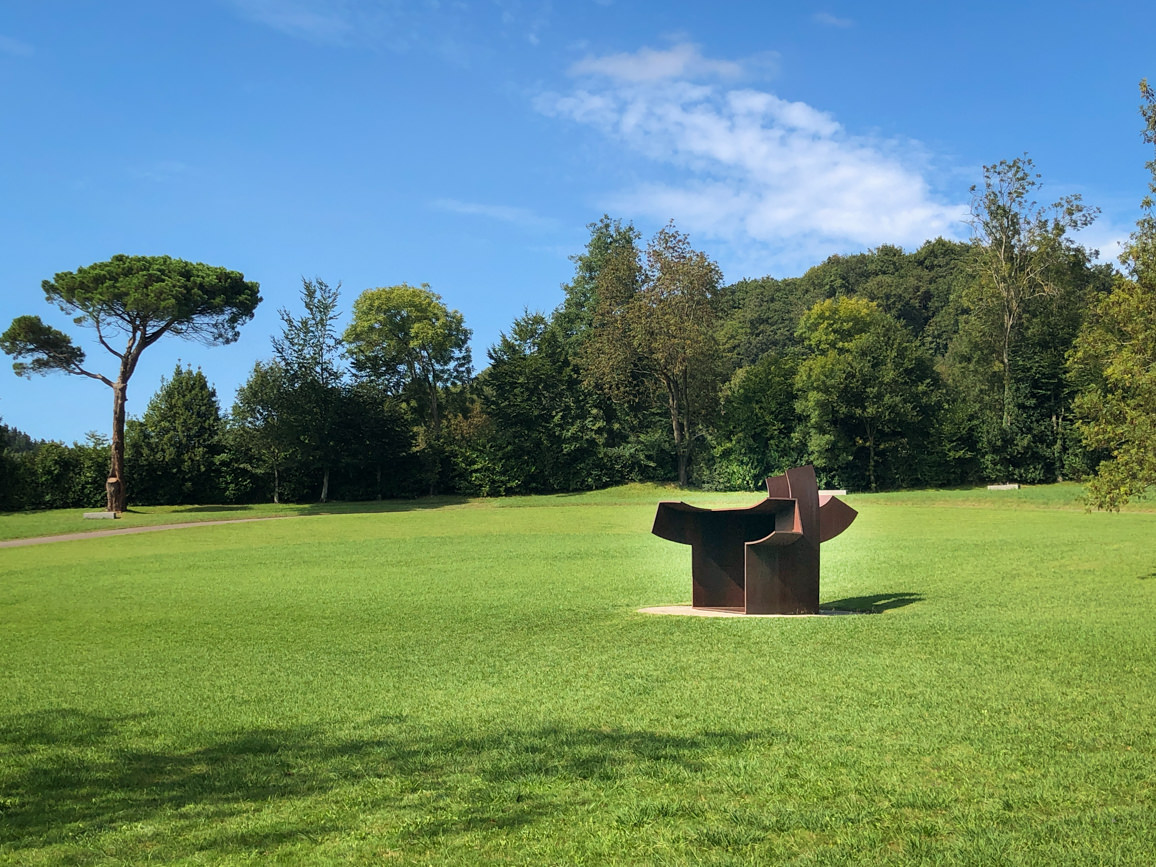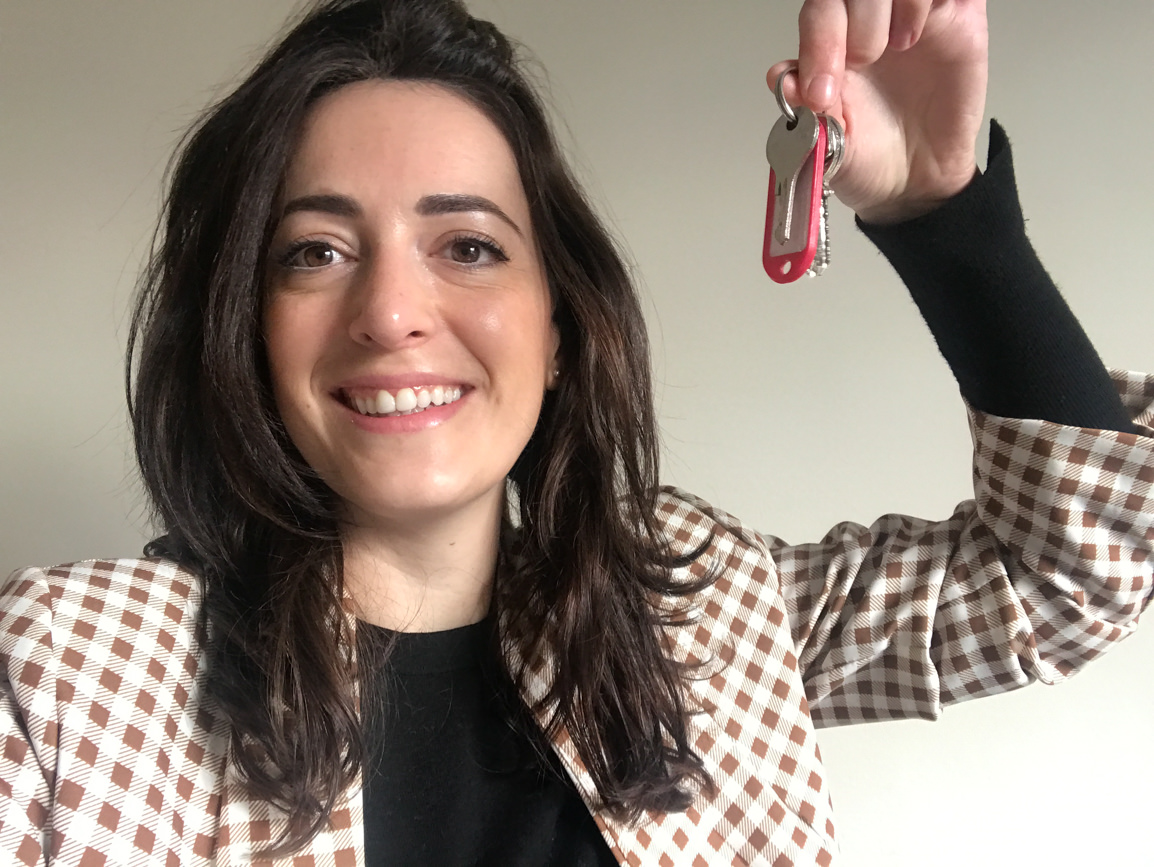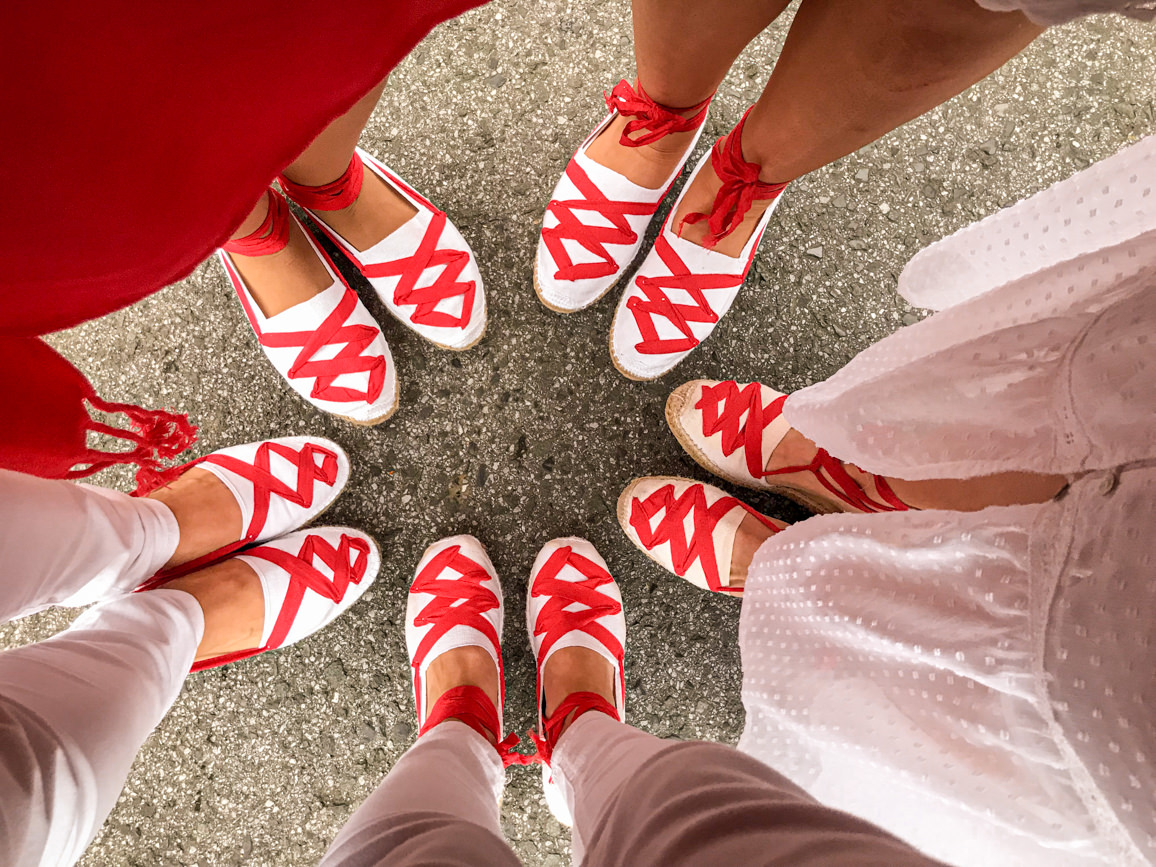
The Alarde in Irún: ‘fiestas’ of San Pedro & San Marcial
Traditions close to one’s heart can hardly be put in writing. So many words come to my mind when I think of June 30th, the day of San Marcial: passion, pride, emotion, memories. This is by far my favorite day of the year, the one we wait for all year long in my hometown of Irún. Curious to learn more about the traditional military parade known as Alarde? Then keep on reading.
Every June 30th is marked in the calendars and hearts of every inhabitant from Irún.
On this day, we celebrate our patron saint, San Marcial.
In this blog post I’ll explain what the history behind it is, what the key words and dates are, and how to get dressed for this special occasion.
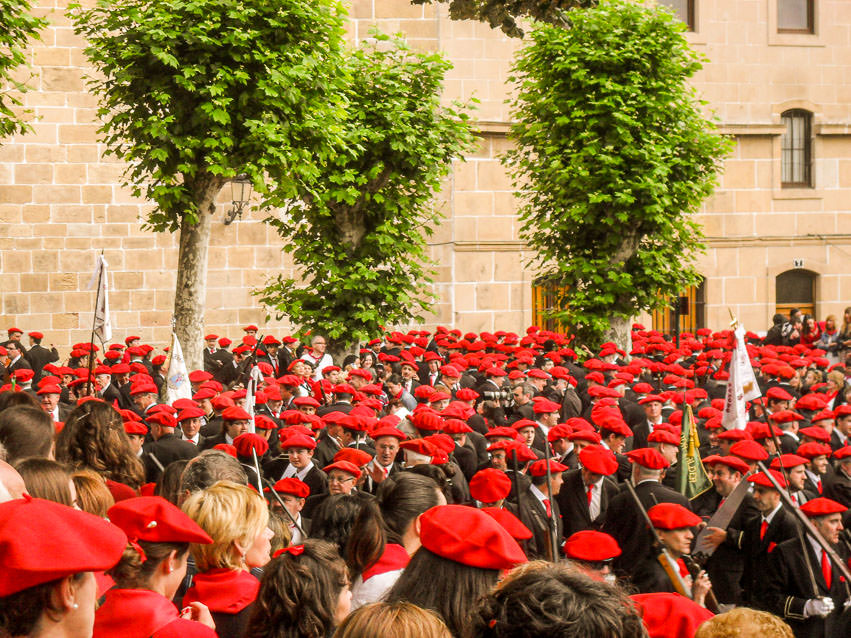
History behind the Alarde and the tradition of San Marcial
The military parade (or Alarde) that is celebrated in Irún every June 30th commemorates the victory of the Spanish troops over the French during the early hours of June 30, 1522 (the day of San Marcial). The battle, which took place in the Peña de Aldabe in Irún, was part of a series of French offensives whose objective was to control the border area by the Bidasoa river. Since then, locals vowed to build a chapel in that location and to thank their patron saint San Marcial every year.
Almost three centuries later, on August 31th 1813, there was a second battle (known as Batalla de San Marcial) in which the Spanish–Portuguese–British allied army faced and defeated the Napoleonic troops.
In the centuries that ensued, locals kept celebrating a military parade on the day of San Pedro (June 29) followed by a procession to mount San Marcial on June 30th. From 1881 onwards, it was decided to organize a joint procession and military parade on June 30th.
For more information about San Marcial and the traditional Alarde, you can check the following:
- Official website of the traditional Alarde
- Social media platforms and other related resources from the traditional Alarde
- On my Instagram account, you can also find a folder dedicated to San Marcial highlights.
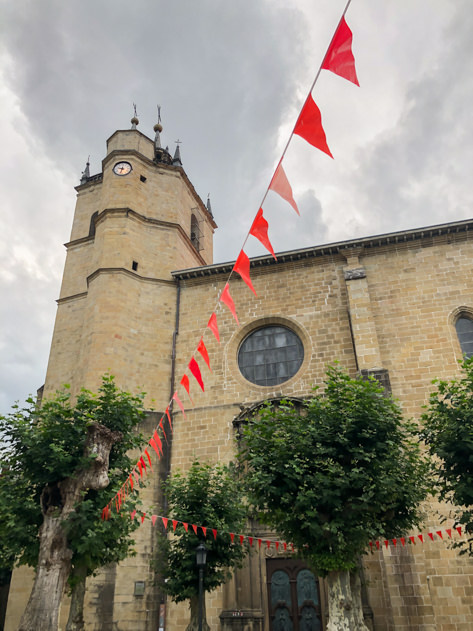
Key words to know during the Alarde
There are certain words you need to know when celebrating San Marcial in Irún.
- Alarde: this term refers to the military parade that takes place on June 30th, both in the morning and in the afternoon.
- Arrancada: this moment marks the beginning of the Alarde from the Plaza de Urdanibia in Irún around 7.40am.
- Cantinera: she’s the main (and only feminine) figure in every company. Many young girls dream of becoming their neighborhood’s cantinera but just a few make it since there is strong competition. Typically, there had only been one Alarde, the traditional one, meaning the only women who paraded were the cantineras. Starting in 1996 though, women increasingly demanded representation in the Alarde. This issue became very controversial (and still is). After heavy opposition, their demand gave birth to a second Alarde called ‘Alarde Mixto‘, in which both men and women parade. Nowadays, both Alardes coexist but parade at different times.
- Compañía: the term refers to a military company. Pretty much every neighborhood in Irún has its own company, with a total of 19 companies as part of the traditional Alarde. Most of them are infantry companies, with some ‘special’ ones including Tamborrada (drummers), Banda (the Music Band), Caballería (Cavalry) and Artillería (Artillery). The companies are typically made up of a captain, a lieutenant, a sub-lieutenant, two sergeants and three corporals in addition to the band of flutes (‘txibilitos‘) and drums (‘tambores y parches‘) together with the soldiers carrying shotguns. Finally, every company elects its own ‘cantinera‘ during the month of May.
- Descarga: it refers to the discharges fired by the Artillery and infantry companies both on June 29th and 30th. They can be very loud, especially the ones fired with the cannons. Make sure to cover your ears and open your mouth to reduce the impact!
- Diana: this song (known as Diana de Villarrobledo) is played every June 30th in the Plaza de San Juan (Town Hall square) at 6am by the Music Band. Many people gather here with their family and friends in order to listen to the tune and then pick a spot for the Arrancada. If you’d like to know more about the music in San Marcial, click here. You can also listen to it on Spotify.
- Ensayo (rehearsal): although the big day is June 30th, preparations begin weeks earlier. In May, all cantineras are elected by their respective companies. During the following month, they’ll be happily running from one place to another giving interviews, buying new clothes for their various rehearsals and trying their make up and San Marcial outfits in order for everything to run smoothly during the key dates. Likewise, companies start rehearsing and marching through their neighborhoods around June 20th.
- Revista: on June 29th, marking the day of San Pedro, the General of the Alarde and his command crew inspect every infantry company riding their horses throughout Irún. Ammunition is provided to the troops on that day as well as on the following, during the day of San Marcial.
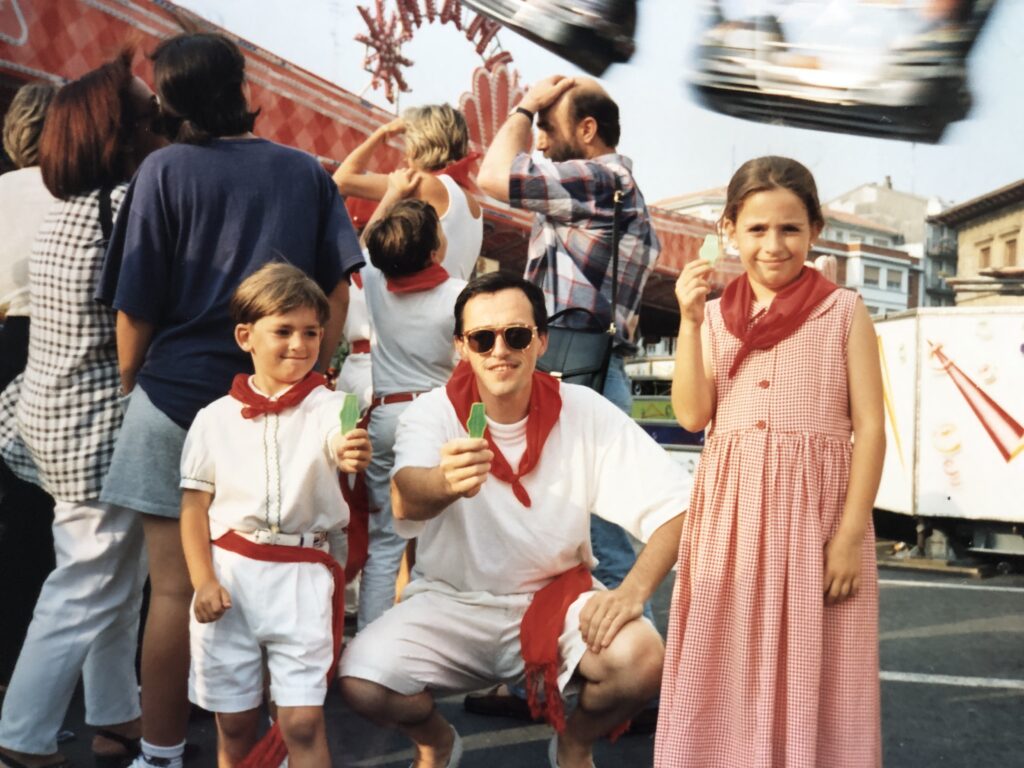
Key dates to be aware of
The celebrations in Irún, also known as San Marciales, tend to last for a week or so, officially kicking off during the night of San Juan and ending on July 1st. During those intense days, there’s plenty to do, from going to concerts to having fun with family and friends while preparing for the big days. Check out the main dates below.
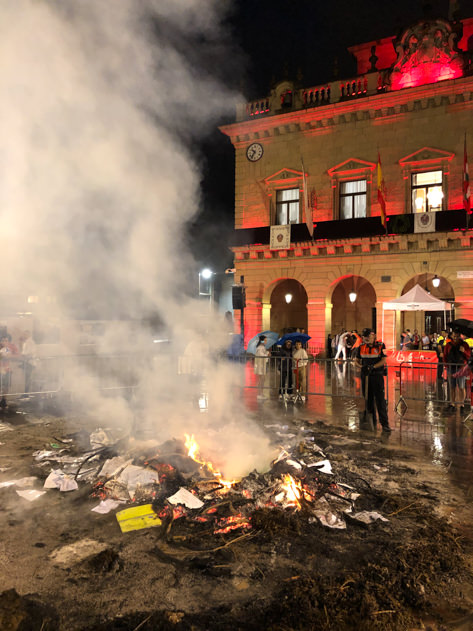
June 23 (noche de San Juan)
In the northern hemisphere, the summer solstice takes place every year on the night of June 23rd. Throughout Spain, locals gather in towns and villages around bonfires to celebrate the longest day of the year and dispel bad spirits. Since it typically coincides with the end of the school year, youngsters like to burn their notebooks in the bonfire or jump above the fire. In Irún, you will find that a tall tree is set up in the Townhall square (plaza de San Juan). If you’re courageous enough, you can try to climb it up in order to get the reward that sits on top of it.
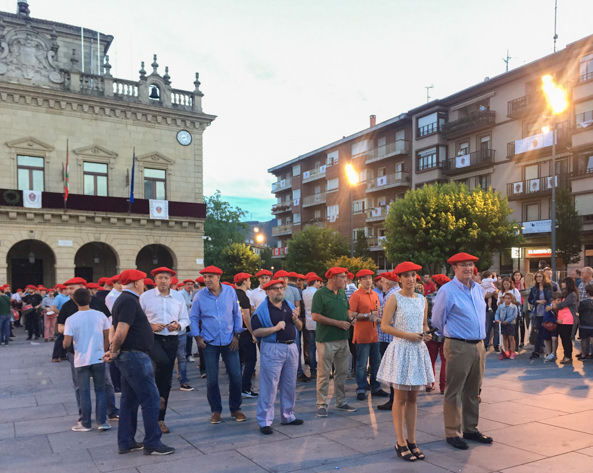
Ensayos
As mentioned above, infantry companies start rehearsing and marching through their neighborhoods around June 20th. They typically rehearse two days on their own while on the third one they do so altogether (this is known as the ‘Alardillo‘ or ‘Arrancadilla‘).
In the case of the Tamborrada (drummers) and Banda (Music Band) companies, they work slightly differently. There’s usually a joint rehearsal of both companies on one day (‘Ensayo conjunto de Banda y Tamborrada‘), while on another day, the Tamborrada parades on its own around Irún (in what is known as ‘Vuelta al Pueblo‘) with all its members wearing a red beret.
Last but not least, the Cavalry and Artillery companies only rehearse on June 29th, during the day of San Pedro. However, they are the most spectacular and visually appealing companies because they ride on horses.
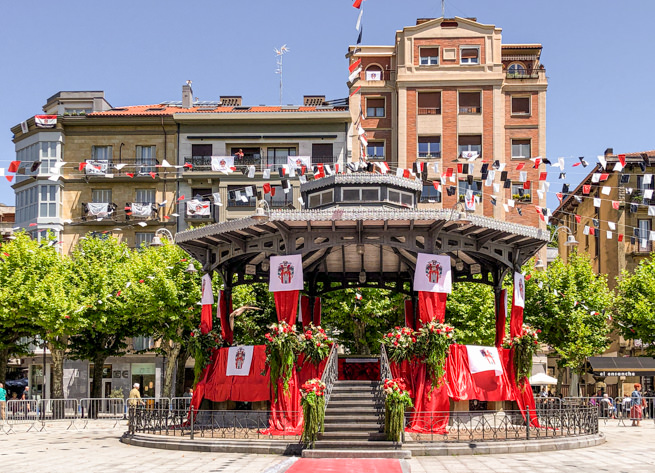
June 28
On this day, the elected cantineras are officilally presented at a formal and emotional ceremony in the city center. Likewise, friends gather for dinner to celebrate the upcoming big days and party until late at night.
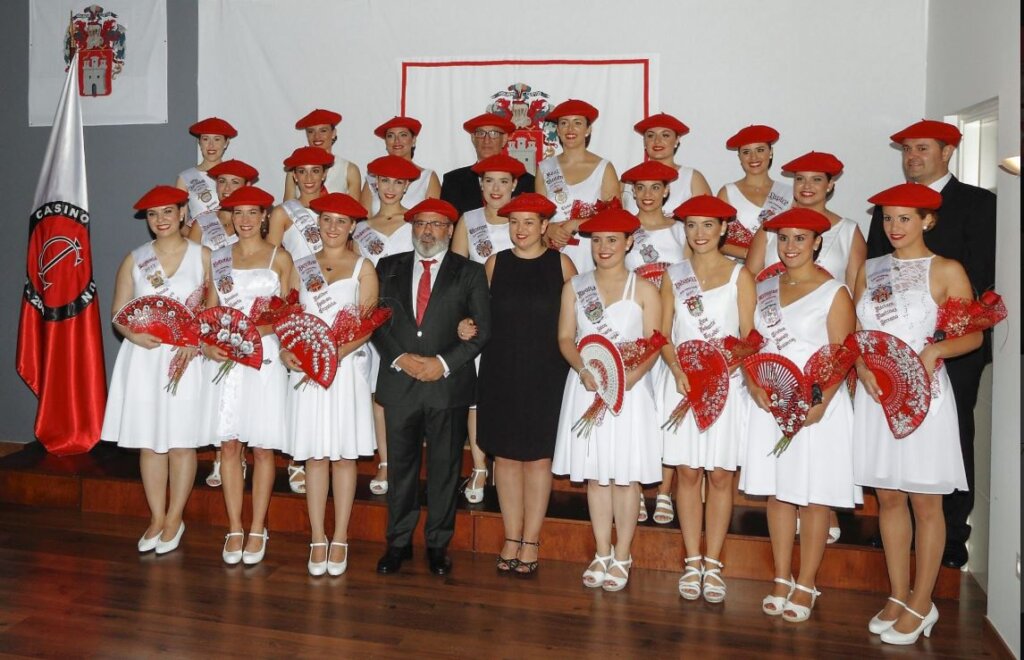
June 29, San Pedro
San Pedro is the prelude of San Marcial, which happens the day after. In the afternoon of June 29, the Cavalry company led by the General of the Alarde inspects the troops. During this military ceremony known as Revista, they ride horseback throughout the various neighborhoods’ companies in Irún. This symbolizes that everyone is ready for the “battle” the next day.
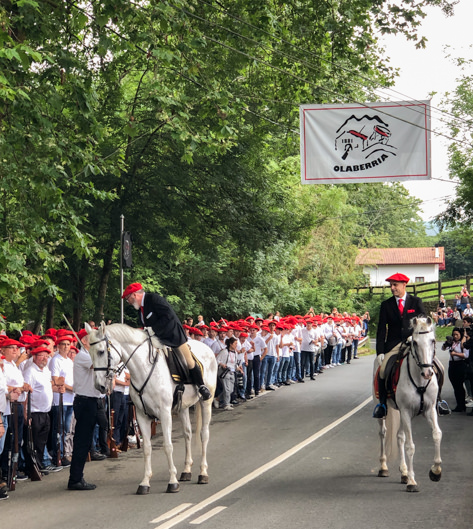
That same night, the Antorcheras parade organized by Pagoki takes place. This act commemorates the night before the battle of June 30, 1522, when the women and children of Irún walked with burning axes and simulated the noise of horses’ hooves to make the French enemy troops believe that the Spanish soldiers were still in the city instead of advancing towards their position in Peña de Aldabe. This caught the French by surprise and enabled the victory of Spanish troops.
June 30, Alarde de San Marcial
After waiting for so many weeks and months, June 30th is finally here. It is a LONG day full of emotions and it starts really early in the morning.
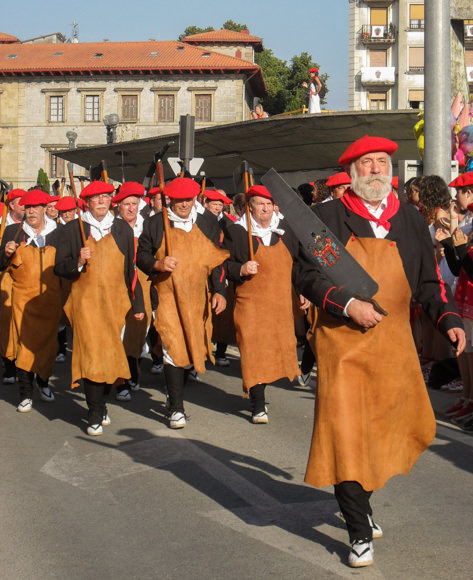
Alborada (4am)
You read right. Celebrations start at 4am and the first San Marcial song that is played in various locations throughout Irún is the Alborada.
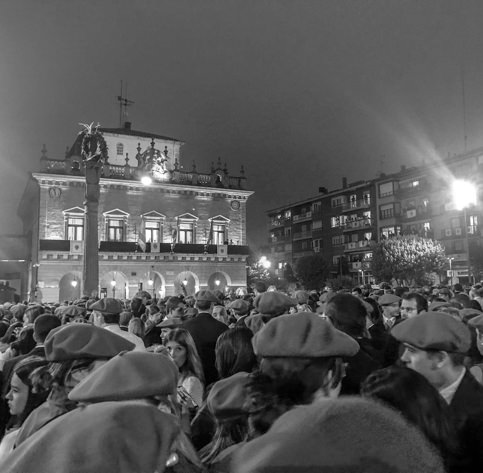
Diana (6am)
The instrumental song Diana de Villarrobledo is played every June 30th in the Plaza de San Juan (Town Hall square) by the Music Band. Many people gather here with their family and friends in order to listen to the music and jump altogether. Paths then typically separate for those supporting the traditional Alarde: the boys join their companies, while women and youngsters go take a seat on the street and have breakfast while they wait for the military parade.
In the meantime, cantineras are ready to be picked up by their respective companies before heading to Plaza de Urdanibia. Cantineras are also responsible for providing breakfast (and a light dinner later in the evening) to their entire company.
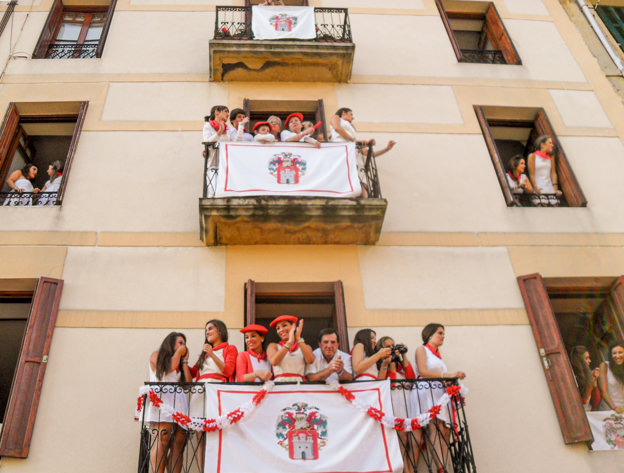
Arrancada & Alarde in the morning
Starting from the Plaza de Urdanibia in Irún around 7.40am, the Arrancada marks the beginning of the Alarde. After the sound of the cornet, the sappers (‘Hacheros‘) open the parade by walking up the Cuesta de San Marcial on their way to the Town Hall. The whole town breaks out in applause and cheers. Once the 19 companies have followed, they all wait in the Townhall Square until the General joins them and inspects the troops. The Irún flag, carried by the Bidasoa company, is then incorporated, and three discharges are fired. After that, the Alarde continues towards the Juncal Church, where the discharges are repeated. Later on, the companies resume their parade around the streets of Irún and set off for Monte San Marcial, the hill where the hermitage of the same name is located. Up there, a religious pilgrimage (romería) takes place, including the offering to the patron saint and a mass celebration. People snack and dance before heading back to Irún for lunch (and if you’re lucky, for a power nap).
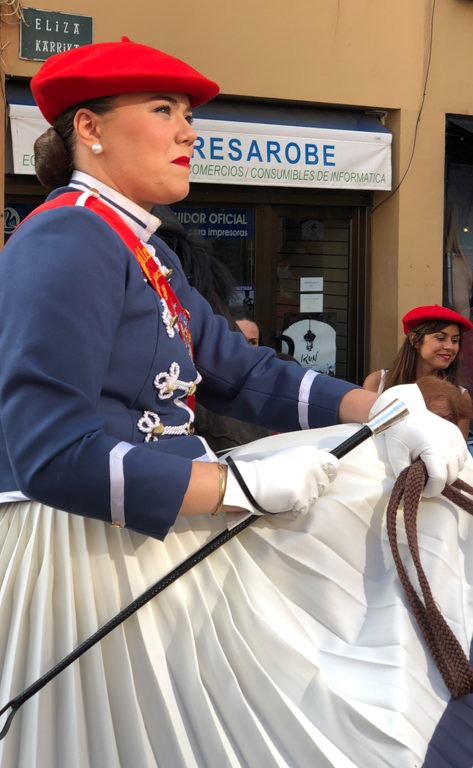
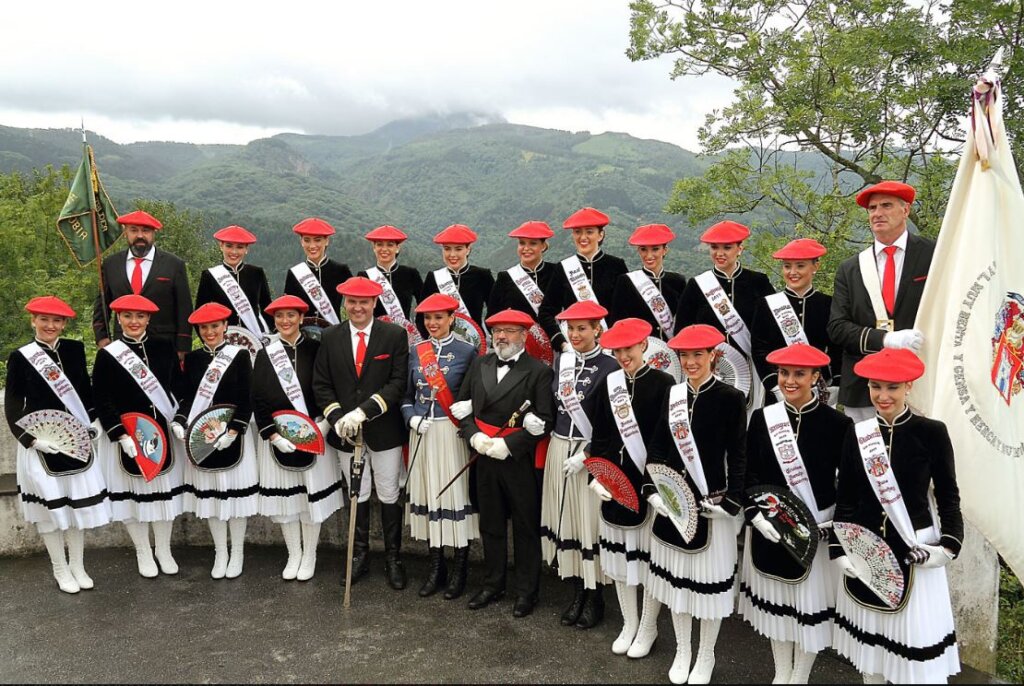
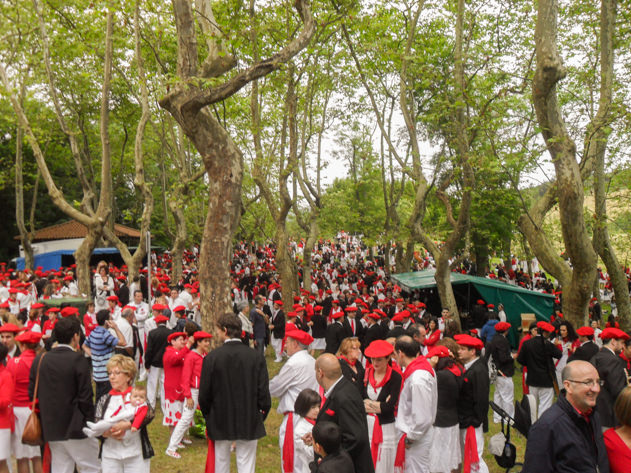
Alarde in the afternoon
On June 30th in the afternoon, the companies gather again and march through a similar path. The most emotional part is when the troops descend Calle Mayor, which is the last section of the parade just before breaking ranks in the Townhall Square. After that, each company returns to its neighborhood.
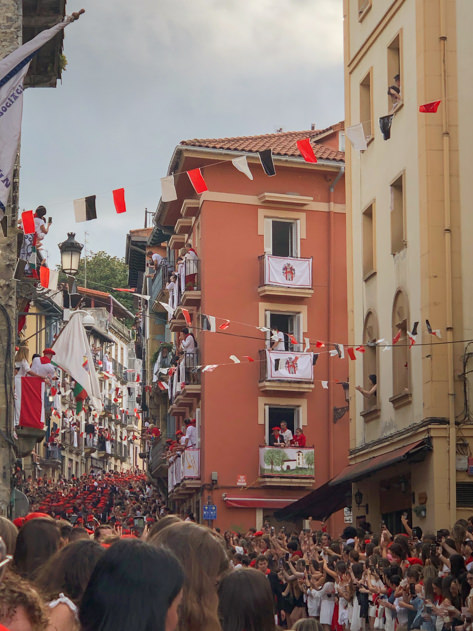
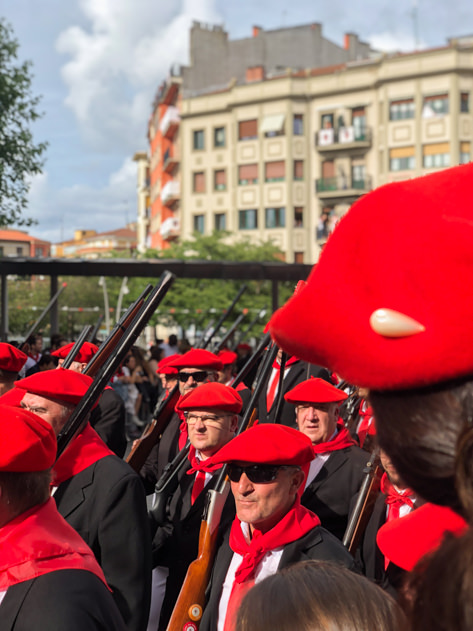
As you might imagine, celebrations continue when night falls. They actually do so until dawn. When I was younger, the fun happened mostly in the Arkupes, the arches below the Town Hall, where musicians, soldiers and anyone who wanted to join played, sang and danced hoping that June 30th would never end. Nowadays, the party areas concentrate around the bars in Calle Mayor and Plaza Urdanibia (informally known as Moscú, like the capital of Russia).
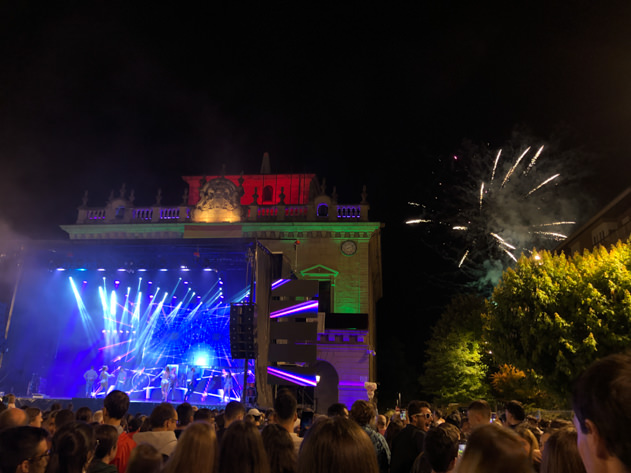
July 1st
At 6am in the morning on July 1st, the remaining people in plaza San Juan play the “reDiana“, a replica of the Diana played 24 hours earlier. After a memorable day, they all start heading home little by little, already thinking about the fiestas next year.
The first day of July is usually spent on recovery mode after an intense week of emotions and partying hard. That night, to finish the celebrations on a high note, the city organizes a firework show followed by a comedian’s monologue.
Gora Irún, gora San Marcial!
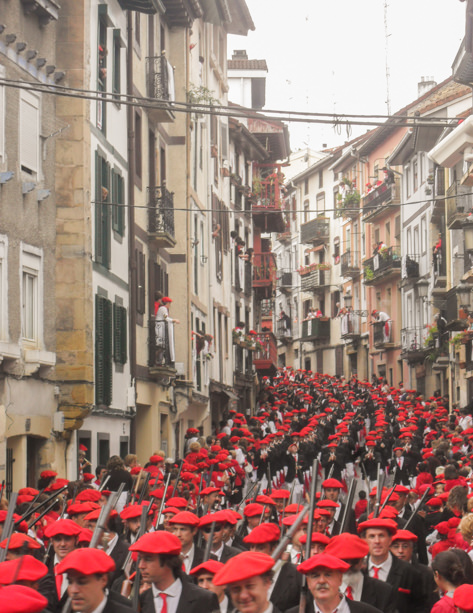
How to get dressed for the Alarde in Irún
Red, white and black are the three main colors during this celebration. Although it is very similar, it is not to be mistaken with the outfit for the famous San Fermín in Pamplona.
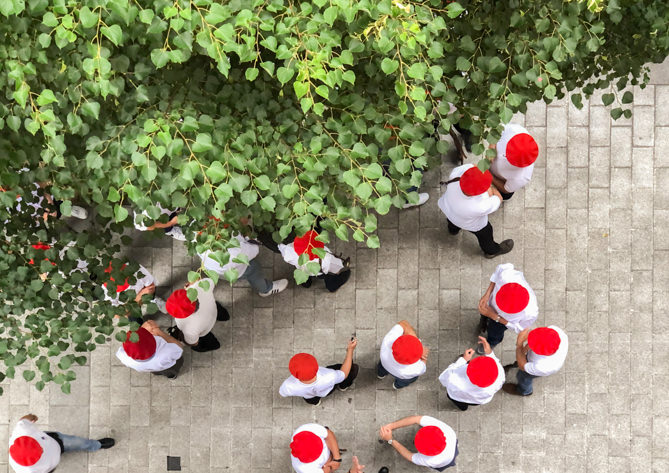
On June 29th (San Pedro), all infantry companies wear a polo shirt. It is typically white and can display the logo of the company. However, there are exceptions such as the Real Unión company, whose members wear a black polo shirt. On this day, cantineras put on a white dress. Since they go on horseback, the Cavalry and Artillery male members of the company wear riding pants, whereas their cantineras dress with a long black skirt and a white blouse.
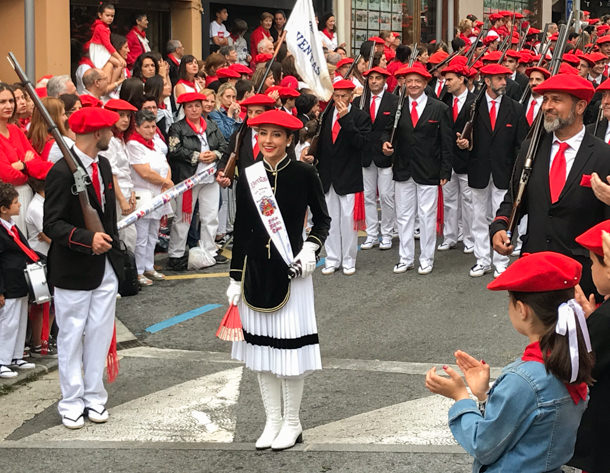
On June 30th (San Marcial), all infantry company members dress as follows: black and white espadrilles, white trousers and shirt, black blazer, red sash, tie and beret (txapela). In the afternoon, soldiers also put on a red kerchief around their necks. On the other hand, cantineras wear a black mess jacket and apron, knickerbockers under their white table skirt, white boots and gloves, a red beret and a white sash with their name and company tied to a small barrel. They greet with a fan throughout their itinerary.
In the case of the Cavalry and Artillery cantineras, they wear a slightly different outfit, including a blue mess jacket, black boots and a whip instead of a fan. The cantinera from the Cavalry is the only one with a red sash.

For the public in general, most women watching the parade wear a white dress along with a red kerchief and white and red espadrilles. Some others like to wear a sash around their hips, others prefer putting on a red beret, or both. You can also wear trousers if you feel more comfortable. The point is: as long as you stick to wearing something red, white and or black, you’re fine!
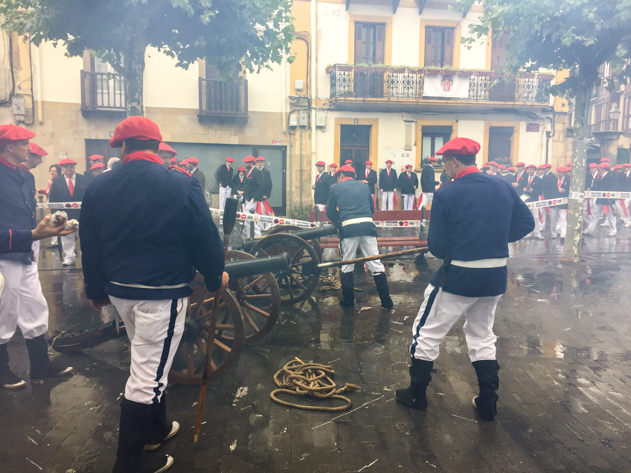
I hope you enjoyed this post about the Alarde and the traditions in my hometown. Feel free to leave your comments below!
Want to know more about Irún? Read these other posts for inspiration!

